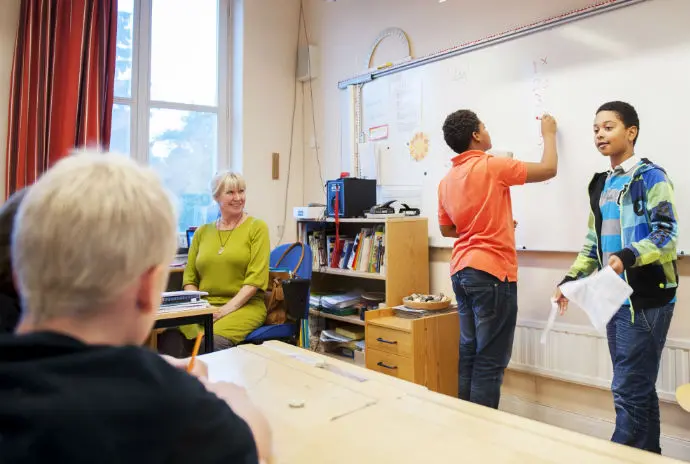Mother tongue and Swedish as second language
Engelska (ENG)
Pupils who have a mother tongue other than Swedish may have a right to mother tongue education. If you want your child to receive mother tongue education, you need to apply for it.

The mother tongue is of major significance to a child’s language, identity, personality and cognitive development. The possibility of being able to develop the mother tongue makes it easier to learn both new languages and knowledge. The school has the mission of organising the teaching for pupils with a different mother tongue so that the pupils are given the conditions to develop language (both mother tongue and Swedish) and knowledge in parallel.
Mother tongue education
Pupils who have a mother tongue other than Swedish may have a right to mother tongue education. Having access to his or her mother tongue facilitates language development and learning in various subjects. If you want your child to receive mother tongue education, you need to apply for it. Ask the school what you need to do and what requirements are set.
Study guidance in the mother tongue
A pupil shall receive study guidance in his or her mother tongue if the pupil needs it. This applies not only to recently arrived pupils. For recently arrived pupils, study guidance is provided in the pupil’s strongest school language if it is different than the mother tongue. For example, there are recently arrived pupils who have been refugees for a long time and attended school in a country other than their home country and received instruction in a language other than their mother tongue. For these pupils, it may be this language that the pupil best develops his or her knowledge in. Study guidance in the mother tongue also helps the pupils develop knowledge in school subjects and the Swedish language.
Swedish as a second language
Through teaching in the subject of Swedish as second language, the pupils are to be given possibilities to develop the Swedish language in speech and writing so that they can express themselves in various contexts and for different purposes. Through the teaching, the pupil is given the possibility of developing the language to think, communicate and learn. The pupil shall be able to rely on his or her language. The teaching shall give the pupils opportunities to communicate in Swedish at the language level the pupil is at, without the language having to be correct in detail. It is the headmaster who decides if a pupil will receive instruction in Swedish as second language.
The rules for participating in Swedish as second language differ in compulsory school and in upper-secondary school. In order for a pupil to take Swedish as second language in compulsory school, the pupil must
- either have a mother tongue other than Swedish or
- have Swedish as his or her mother tongue and have gone to school abroad or
- be an immigrant pupil and have Swedish as the interaction language with a guardian.
The pupil must also need instruction in Swedish as second language.
A pupil who attends upper-secondary school and has a mother tongue other than Swedish may take Swedish as second language as a common upper-secondary subject instead of Swedish.